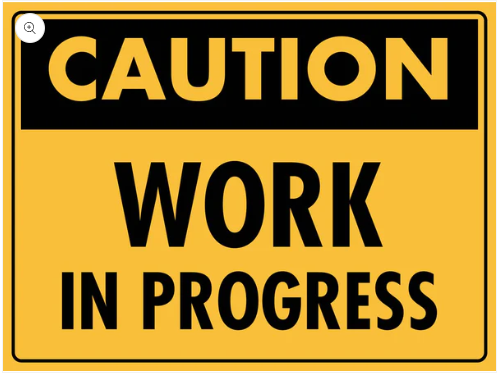Advanced Placement Strategies for Caution Wet Floor Signs in High-Traffic Areas
- Written by Metropolitan Digital
A caution wet floor sign is no ordinary warning device. It serves the vital purpose of notifying individuals about treacherous and slippery conditions in an area. Its presence acts as a proactive measure, mitigating the risk of injuries resulting from falls caused by wet surfaces. By effectively conveying the message, this sign empowers individuals to take necessary action and prioritize their safety.
History of Caution Wet Floor Signs
For well over a century, the yellow and black "Caution: Wet Floor" sign has permeated workplaces and public spaces, becoming an emblem of caution. But the roots of this ubiquitous warning stretch far back in time. As early as 1903, caution signs emerged in American factories, initially simplistic wooden boards with concise text urging employees to exercise caution near wet areas or slippery surfaces. However, it was in 1927 that Henry Fechteler, an entrepreneurial visionary, revolutionized the field with a groundbreaking innovation: an all-in-one "Caution: Wet Floor" sign tailor-made for commercial spaces like restaurants, bars, and supermarkets.
Fechteler's ingenious design featured lightweight plastic adorned with adhesive backing, ensuring effortless placement on any flat surface. The vibrant yellow hue of the caution-wet floor sign caught the eye from afar, while the bold black lettering acted as an unmistakable warning against potential slips and falls. Since its inception, this simple yet effective design has transcended boundaries, becoming an internationally recognized symbol of safety in public places.
Purpose of Caution Wet Floor Signs
Caution wet floor signs have become indispensable in public spaces bustling with foot traffic and for good reason. They serve a crucial purpose: alerting others to potential hazards, thereby preventing slip and fall accidents. In this article, we will delve into the purpose of caution wet floor signs, highlighting their significance in public safety and their role in helping businesses avoid expensive liability claims.
At its core, the primary purpose of caution wet floor signs is to inform people that the surface they are traversing is perilously slippery due to water or other liquid substances. This warning acts as a safeguard for those who may be unaware of recent mopping or cleaning, thwarting potential slips or falls. Most caution wet floor signs go the extra mile by incorporating supplementary instructions such as "Caution: Please Stay Away From This Area," further dissuading individuals from entering hazardous zones until the cleaning process is complete.
When it comes to public safety, caution wet floor signs have become an indispensable component of many business operations. By prominently displaying these warnings in areas prone to spills and subsequent slippery conditions, businesses ensure the safety of their customers on-site, reducing potential legal liabilities in case of injuries.

Different Types of Caution Wet Floor Signs
Ensuring workplace safety necessitates the presence of wet floor signs. Not only do these signs serve as an alert for employees and customers regarding potential slip hazards, but they also provide a visual reminder to exercise caution when traversing wet areas. There is a plethora of caution wet floor signs available for purchase, each boasting unique features and benefits.
The traditional yellow or orange triangular-shaped sign is perhaps the most recognizable type. Constructed from lightweight plastic or cardboard, these signs are strategically placed on the ground underneath water spills or recently mopped areas. Their bright colouration ensures quick visibility, drawing attention without being overly obtrusive or obstructive.
On the other end of the spectrum, a modern design has emerged, incorporating LED lights and captivating graphics such as cartoon characters or other attention-grabbing elements. These additions enhance the visibility and effectiveness of the signs, surpassing the impact of traditional ones. While the cost may be slightly higher, their durability and long-range visibility justify the investment.
Furthermore, magnetic warning signs have gained popularity, allowing for easy placement and removal in areas prone to wetness or spills.
Placement and Installation Considerations for Caution Wet Floor Signs
In any setting where water is present, ensuring people are aware of the potential for slips and falls becomes paramount. Caution wet floor signs act as a powerful reminder to exercise extra care when navigating wet areas, effectively reducing the risk of accidents. However, to maximize their efficacy, certain placement and installation considerations must be taken into account.
Visibility stands as one of the most critical factors when it comes to caution wet floor signs. Placing the sign in an area where individuals can spot it before encountering the wet surface is essential. Ideally, positioning the sign near doorways or entrances, frequently traversed paths, ensures optimal visibility. Moreover, placing the sign at eye level enhances the likelihood of immediate notice.
To prevent accidental displacement or movement, it is imperative to secure caution wet floor signs effectively. Utilizing heavy-duty adhesive tape or screws, depending on the sign's material and surface placement guarantees their stability and reduces the risk of unintended adjustments.
Benefits of Using Caution Wet Floor Signs
Wet floor signs are indispensable tools in any workplace, offering a myriad of benefits. Not only do they inform employees and visitors of potential hazards, but they also significantly reduce the risk of slips and falls. Even the most basic wet floor sign can play a pivotal role in preventing accidents stemming from wet floors.
The advantages of using caution wet floor signs extend far and wide. They serve as immediate warnings, alerting individuals to potentially hazardous conditions on the premises. By making people aware of the presence of water or other slippery substances on the ground, these signs prompt individuals to exercise caution while walking through these areas. Consequently, accidents related to poor footing on slick surfaces are minimized.
Additionally, visible warning signs throughout a building contribute to an effective safety culture. They demonstrate an organization's commitment to the well-being of its employees and visitors, fostering an environment where safety takes precedence. Moreover, the presence of caution wet floor signs showcases compliance with health and safety regulations, mitigating potential legal complications.
Conclusion
Caution wet floor signs hold an integral place in workplace safety measures, effectively alerting individuals to potential hazards and facilitating necessary precautions. Placing these signs strategically in areas prone to slipping or falling, such as bathrooms or near pools, ensures the safety and productivity of employees. By embracing cautious wet floor signs, employers demonstrate their unwavering commitment to prioritizing the well-being of their workforce and visitors alike.







